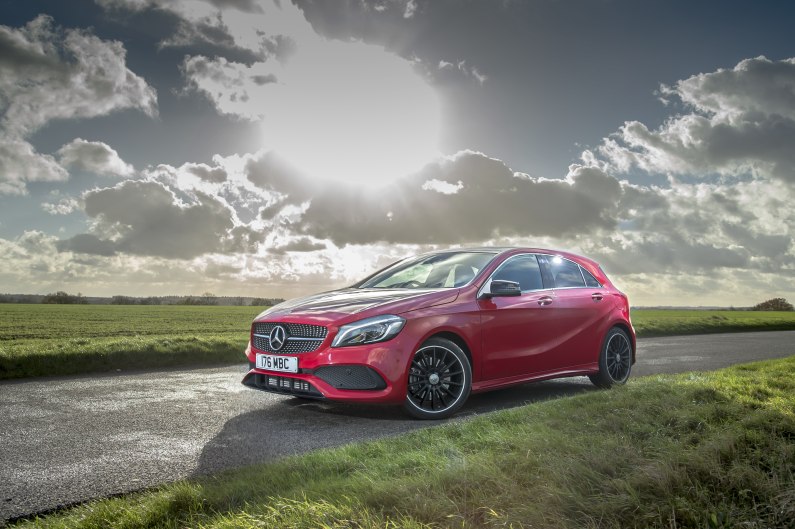
Once a tall compact people carrier with a famous reputation for the Elk Test, this third-generation Mercedes-Benz A-Class switched to hatchback form to deliver a more engaging drive. An upmarket interior and spread of engine options that include a hot AMG version make it a popular consideration.
PROS:
+ Premium interior
+ High safety rating
+ Good standard equipment
CONS:
- Firm suspension setup
- Diesel engines are unrefined
- Less boot space than rivals
Verdict: This third-generation Mercedes-Benz A-Class marked a big shift in design, adopting a hatchback shape like its main Audi A3 and BBMW 1 Series. It suffers from a firm ride, but adaptive damping in facelift models is worth seeking out. Diesel engines can be raucous despite being economical, but don’t ignore the appealing petrol options.
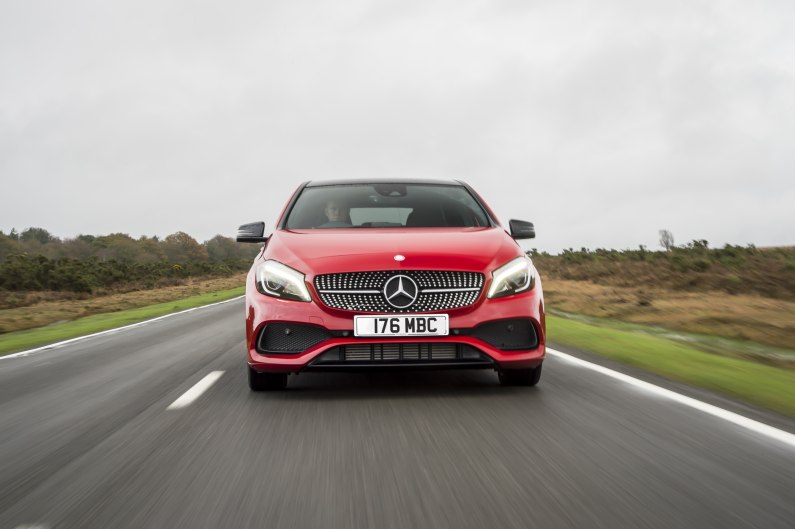
Used Mercedes-Benz A-Class (2013-2018) review: the five-minute read
The third-generation Mercedes-Benz A-Class was the first to gain mass appeal as it ditched the tall compact MPV form in favour of a five-door hatch format that was more in line with its chief rivals, the Audi A3 and BMW 1 Series. The W176 (for fans of Mercedes-Benz internal model codes) also shares some of the same underpinnings as the B-Class, along with the sleeker CLA and GLA crossover.
It has a purposeful stance, looking especially good in higher specification models where it benefits from a sportier body kit and larger wheels. A large front grille and three-pointed star emblem will leave nobody uncertain as to what brand of car you’re driving either.
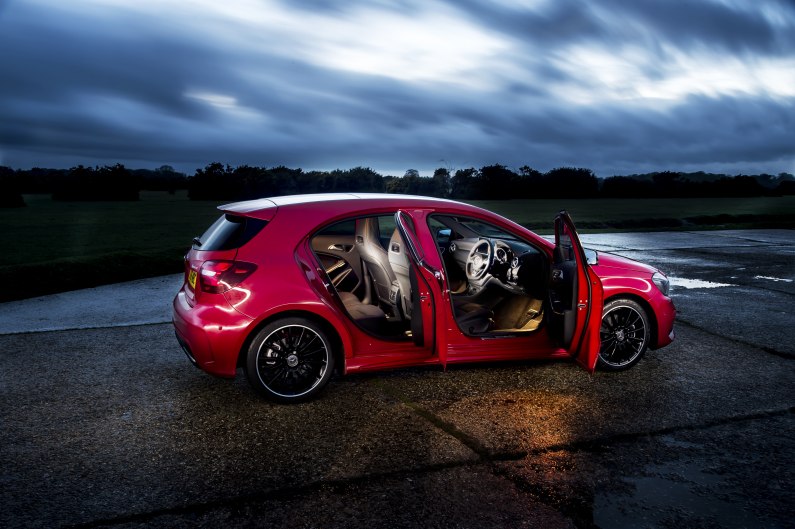
The A-Class only came in a five-door hatchback body style, whereas other rivals offer three-door and saloon versions of their cars. That said, the five-door layout is a popular choice and makes the most sense for practicality. However, the Mercedes does lag behind the competition for overall boot space, so that is one aspect to look out for when shopping around. At 341 litres, it is smaller than the Audi A3’s 380 litres, while the BMW 1 Series manages 360 litres.
Things fare better on the inside, where the A-Class delivers the quality design and finish expected from the German brand. Opting for the automatic does free up some more space between the front seats as Mercedes sticks with its tradition of using a column-mounted gear selector.
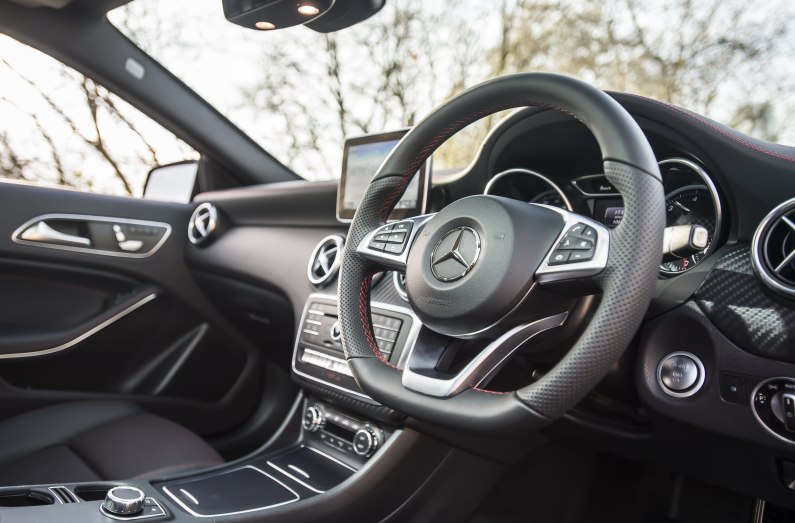
Mercedes fits either a seven- or eight-inch infotainment system display to the A-Class, depending on specification. Perched atop the centre console, it can appear a bit like an aftermarket addition though its high position puts it closer to the driver’s line of sight and should be less distracting to use. The driver can control it via a rotary dial on the centre console. The system predates functional smartphone mirroring software like Android Auto or Apple CarPlay, but all models did get Bluetooth. Higher-spec models get a sportier treatment inside with a carbon fibre effect pattern on the dashboard fascia and a flat-bottomed multifunction steering wheel.
The most significant change with this generation of A-Class came in how it drives. Mercedes was keen to make it more dynamic and engaging than its predecessors, but the ride quality is on the firm side for the segment. AMG Sport versions did get an even stiffer setup, so if you prioritise comfort over a sporty driving experience the SE or Sport models are the ones to look for, along with smaller diameter alloy wheels to maximise bump absorption.
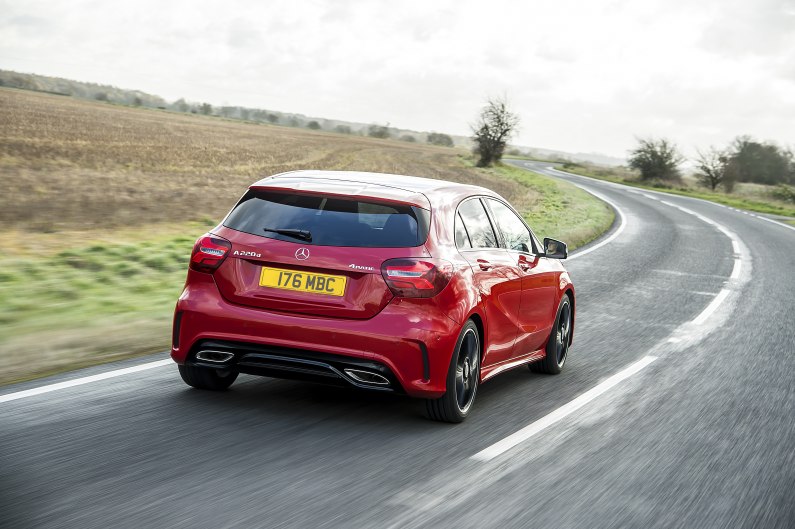
A variety of engines were available, ranging from the entry-level A 160 CDI diesel to a punchy turbocharged A 45 that produced 376bhp in its most potent form. The sweet spots in the engine offering are the A 200 or A 250. Both use the same engine hardware but get different states of tune, so it comes down to how much performance you prefer.
On the other hand, if fuel economy is of greater importance, then look at the A 200 CDI diesel for all-round performance. It’s one of the most fuel-efficient and has relatively low emissions. For the best consumption figures, look towards the 1.5-litre diesel. Yes, it is a Renault-sourced engine but don’t let that deter you as it can realistically return great mileage, especially if you’re sticking more to motorway journeys.
For great Mercedes-Benz A-Class deals click here
Extended read…
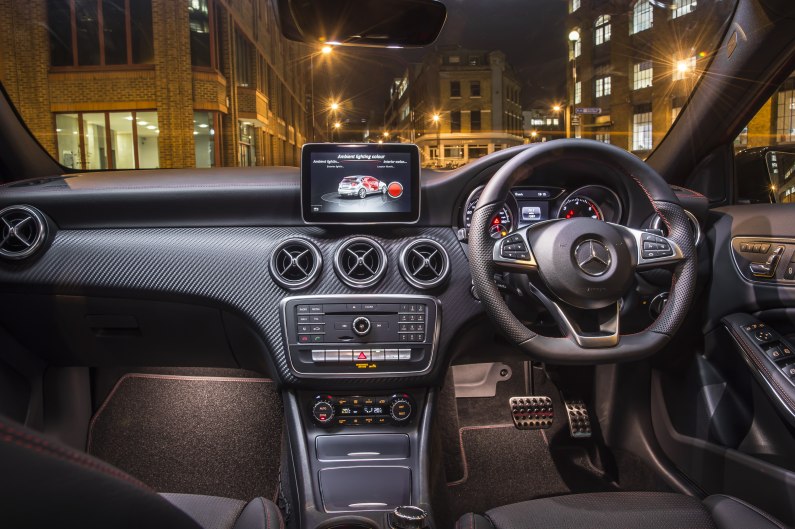
Used Mercedes-Benz A-Class (2013-2018) Interior and infotainment
The interior of the Mercedes-Benz A-Class upholds the high standards of interior design and quality that appear in larger and more expensive models from the brand. As a result, there’s a familiar look and feel, such as the stalk-mounted gear selector in automatic versions.
A small digital display sits between the analogue speedometer and tachometer in the instrument display. The A-Class infotainment system is served up on a free-standing display fixed to the top of the centre console. It’s a decent size but does look like it was added as an afterthought. Operating it is done through a rotary dial similar to the Audi A3. All versions get Bluetooth, USB and aux-in connectivity.
Sportier models feature a flat-bottomed steering wheel, which has multifunction controls and contrasting stitching. The faux-carbon fibre dashboard fascia continues that look, while the round air vents and door-mounted controls for the optional electrically adjustable seats ape what we see in larger Mercedes models.
Buy a new or used Mercedes-Benz
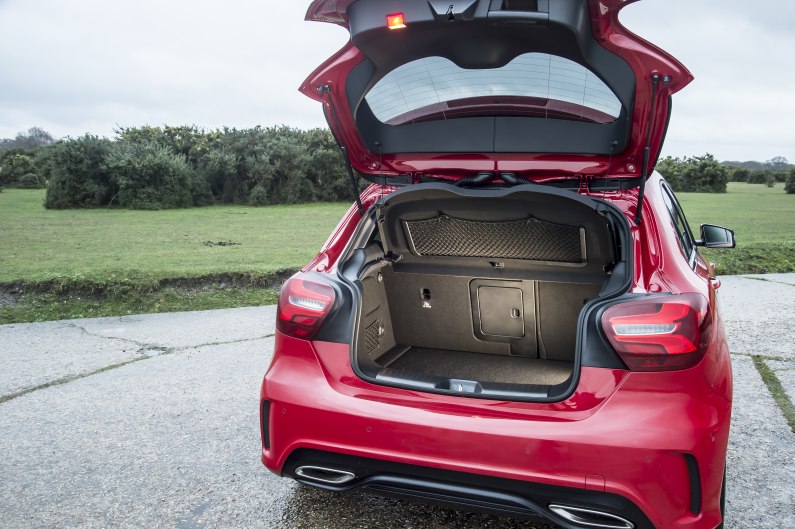
Used Mercedes-Benz A-Class (2013-2018) Practicality and boot space
When it comes to interior space in the Mercedes-Benz A-Class, it ranks on par with its chief rivals, the Audi A3 and BMW 1 Series. There is seating for five with ISOFIX points in the two outer rear seats. Legroom and rear headroom are adequate, but as is common in this segment, the middle back seat doesn’t get as much room, partly due to the presence of a transmission tunnel as the A-Class was available with all-wheel drive.
At 341 litres, the boot space is less than an Audi A3 and the BMW 1 Series. Even the Lexus CT 200h offers more room before you considering folding down the rear seats. In the A-Class, these have a 60/40 split, and when set forward, offer 1,157 litres of cargo volume. It’s worth noting that even though the A-Class concedes on overall boot capacity, it does include some practical features like pockets with elasticated netting on the side and underneath the parcel shelf.
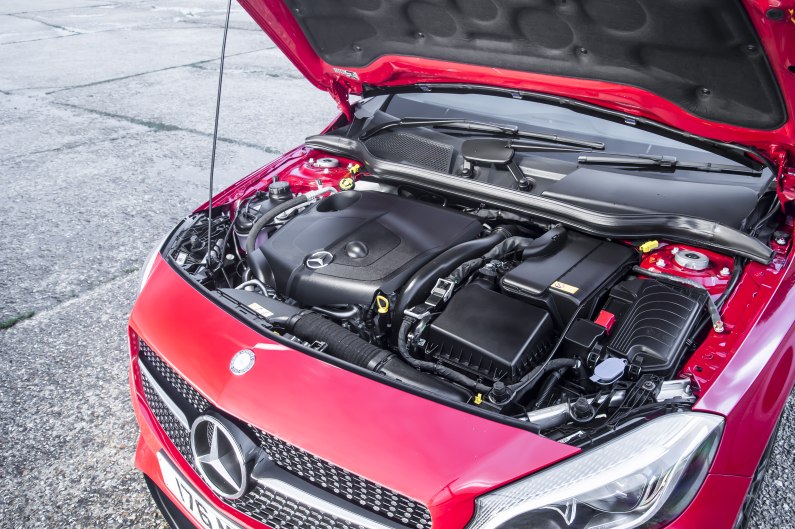
Used Mercedes-Benz A-Class (2013-2018) engine and gearbox
The range of available engines for the A-Class is varied and covers a broad spectrum of performance and economy, depending on your preference and requirements. Two 1.6-litre and two 2.0-litre petrol engines were available alongside a 1.5-litre diesel, 1.8-litre and two versions of a larger 2.1-litre diesel over its model life. These were available with a choice of either six-speed manual or seven-speed dual-clutch automatic transmissions.
With the A 160 badge, this 101bhp four-cylinder was the entry point to the range and provided a modest level of performance best suited to city driving where there’s less time spent at higher speeds. An A 180 benefitted from a higher power output and more torque and used what Mercedes referred to as BlueEfficiency. This term applied to a more economical setup that contributed to a low emissions output of 98g/km. The A 200 also uses this approach and has an output of 154bhp and 250Nm.
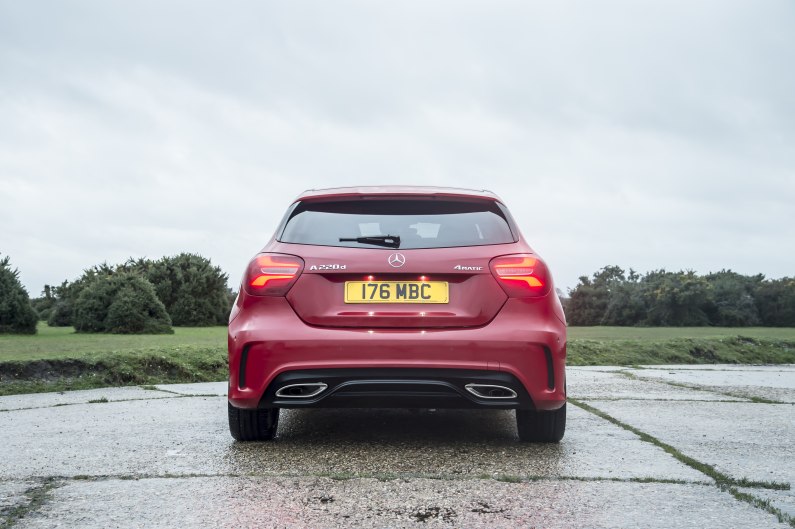
The larger 2.0-litre petrol engines start with the A 220 (184bp) and progress to the A 250 (208bhp). The latter was also available with 4MATIC all-wheel drive. The A-Class didn’t escape the AMG treatment either. Its performance division installed the M133 engine into the hatch to create the A 45. Initially, this had an output of 355bhp, but following the model’s mid-cycle update in 2015, power got a bump to 376bhp.
There is a slight trade-off between efficiency and refinement on the diesel side of the range. Both the 1.5-litre and 2.0-litre engines were neither the quietest nor smoothest in operation. However, these did return some respectable consumption figures, so if you’re a high-mileage user, these are worth considering.
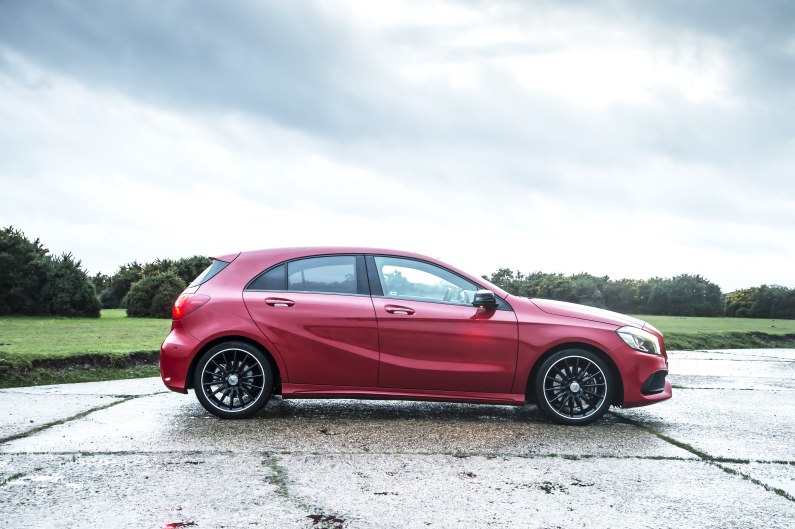
Used Mercedes-Benz A-Class (2013-2018) Driving
The A-Class ticks many of the right boxes for its German premium hatchback makeup, such as direct steering and composure on the road. However, it is recommended that you take a good test drive before buying as this regeneration of A-Class has a healthy reputation for a firm ride that some may find too stiff for everyday use.
When the A-Class come in for an update midway through its model life the option to add adaptive suspension became available. It’s well worth searching for a car with this setup fitted as it adds a desirable layer of comfort to the ride quality.
Only the BMW 1 Series of this era benefitted from rear-wheel drive. This A-Class, like the Audi A3, came with a predominantly front-wheel-drive setup alongside its 4MATIC all-wheel-drive. The latter doesn’t add a great deal more to the overall level of driving enjoyment but is beneficial in more challenging conditions. Sportier AMG A 45 models also get all-wheel-drive, although it isn’t equipped with a limited slip differential and only 50 per cent of the power can be sent to the rear axle. Nevertheless, it’s a cracker of an engine which makes it plenty of fun to drive.
